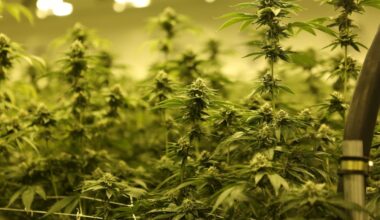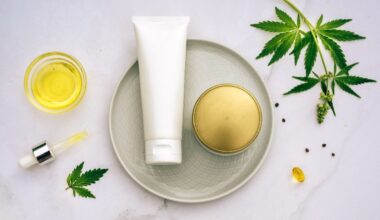[ad_1]
(This is the second installment in a series focused on cultivation planning for hemp and marijuana growers. Read the first installment here.)
Crop nutrition is crucial to a successful start for hemp and marijuana farms. Depending on the cultivator’s location and preferred style of growing, there are several factors to consider before choosing the right mix.
While conventional macro- and micronutrients commonly used in commercial agriculture work well for cannabis, growers who want to incorporate sustainable practices may consider adopting no-till practices and planting cover crops to build up the soil’s microbiology, which can ultimately reduce inputs while saving money.
Like other agricultural crops, outdoor hemp and marijuana crops perform well with the addition of the standard macronutrients nitrogen, phosphorus and potassium.
“In agriculture, you have a target for a specific crop, which is how much nitrogen do I need? Phosphorus, calcium, all the micronutrients,” said Skip Newcomb, farm director at East Fork Cultivars, a producer in Takilma, Oregon, that grows both lower-THC marijuana and hemp for CBD production.
“And you’re putting your (soil) test results up against your targets, which is like your ideal perfect soil nutrient content, and also gives you some information about the soil type, pH and electrical conductivity (EC).”
Crop targets
Certified crop advisers and consultants who perform soil testing can provide growers with crop targets, although because hemp and marijuana are generally newer crops, these are still being developed by private companies and land grant universities that have started researching hemp crops to determine ideal agronomic practices, Newcomb said.
A general guide for fiber and grain hemp varieties is to add 100-200 pounds of nitrogen per acre, about 45-70 pounds of phosphorus per acre and up to 120 pounds of potash (potassium) per acre, according to Eric Singular, director of development and communications for International Hemp, a hemp-genetics company in Denver.
Cannabis is a “heavy feeder,” he said, and growers should consider their return on investment – the crop yield and the price per pound of flower or biomass. Those who don’t invest in fertilizing their crops will see a negative outcome in performance and yield.
“It doesn’t make sense to grow hemp if you’re just not in a position to really meet those input requirements and realize that hemp does require a lot of fertilizer to get a high yield,” Singular said.
Depending on the nutritional deficiencies and requirements of their soil, growers may need to add other nutrients as well.
In southern Oregon, for example, there is high serpentine in the soil, which results in high magnesium, said Newcomb.
“You want a ratio of four parts calcium to one part magnesium, and we actually started in 2015 as the opposite of that – we had four parts magnesium to one part calcium,” he said.
“So each year we’ve been using heavy applications of gypsum, which is high in calcium and sulfur, and the sulfur can attach to the magnesium and leach it out of the soil …. Over the five years that we’ve been doing that, we’re seeing it closer to 2:1 calcium to magnesium ratio.”
Growers should consider micronutrient ratios that work together, as well as nutrient targets, because if the soil is lacking in a particular micronutrient, then the crop may not be able to utilize other micronutrients, Newcomb said.
To till or not to till
Newcomb said East Fork Cultivars is trialing no-till farming this season – a practice that minimizes soil disturbance by avoiding tilling or plowing land, which helps keep carbon in the soil, enriches soil biodiversity, preserves topsoil and retains moisture.
If all goes well, the operation will likely adopt the practice for all of its crops, according to Newcomb.
After harvest, East Fork sows a cover crop on the field to keep the soil protected through the winter, which prevents erosion and keeps the soil microbiology alive.
“We’re mostly using a rye-vetch mix (for hemp), and then on the marijuana side we have rye, vetch and clover,” Newcomb said.
“They work synergistically where the rye can trace its roots deep down, and it’s pulling up nutrients that are deep in the soil, pulling them up closer to the surface where it dies on the surface.
“The legumes are more of a shallow-rooted plant. But they’ll collect the nitrogen in their roots and root nodes, and then when they die, it’s releasing that nitrogen in a plant available form, so they’ll take nitrogen that’s not available to plants and turn it into a form that is available to plants.”
In the spring, before planting, East Fork will mow the cover crop and spread gypsum over top, which reduces erosion and runoff by increasing the ability of soil to soak up water and improves soil aeration and percolation.
“We’ll incorporate the gypsum with the cover crop residue to stop the cover crop from growing,” Newcomb said.
He said a maximum of two weeks before planting, around mid-May is when they incorporate the rest of the amendments and work them into the soil before planting on June 1.
“You don’t want to amend more than a week or two before you plant it because you’ll lose that nitrogen specifically and also potassium sulfur,” Newcomb said.
“Some other specific nutrients are super water-soluble and volatile, so they could evaporate, or they could be washed out of the soil. We prevent that as much as we can by doing it a week or two before we actually plant.”
Soil amendments
Beyond the traditional N-P-K regimen, along with micronutrients, growers looking to improve soil sustainability may consider amendments like biochar and compost to promote a good environment for microorganisms like beneficial mycorrhizae.
Biochar, a charcoal produced by pyrolysis of biomass in the absence of oxygen, is particularly useful because it retains soil moisture while helping the crop absorb the fertilizer and nutrients that are in the soil more efficiently, according to Singular.
Building soil microbiology naturally will ultimately reduce over-saturating the ground with nitrogen – a tenet of regenerative agriculture.
“We’re trucking in multiple 18-wheelers worth of amendments each year, so we’re trying to work away from that and minimizing that effect on the environment,” Newcomb said.
The savings from reducing inputs and labor to apply them, along with increasing yield from those regenerative practices, could be exponential, Newcomb said.
“I would say on our scale of 10 acres, I could see saving at least $100,000.”
Laura Drotleff can be reached at [email protected]
[ad_2]
Source link
Medical Disclaimer:
The information provided in these blog posts is intended for general informational and educational purposes only. It is not a substitute for professional medical advice, diagnosis, or treatment. Always seek the advice of your physician or other qualified healthcare provider with any questions you may have regarding a medical condition. The use of any information provided in these blog posts is solely at your own risk. The authors and the website do not recommend or endorse any specific products, treatments, or procedures mentioned. Reliance on any information in these blog posts is solely at your own discretion.







